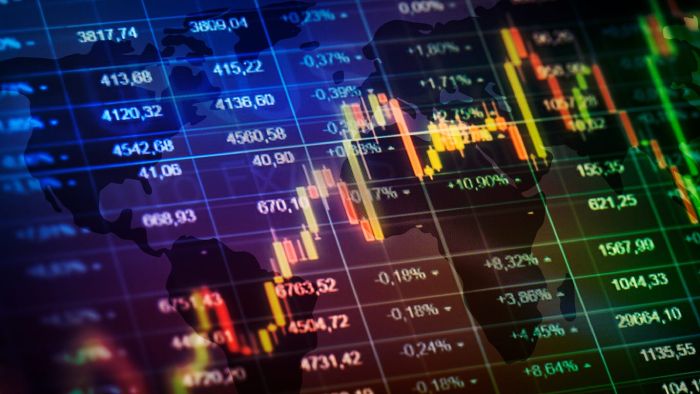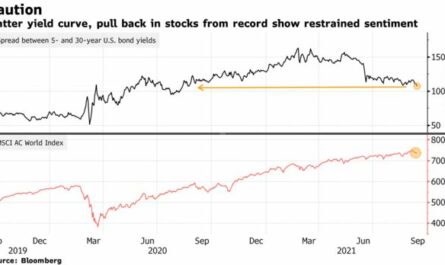Most Americans are reluctant to put resources into a securities exchange slump. Some concern they’ll lose their cash, while others say they need trust in how to contribute, monetary specialists say.
In any case, that hesitance to accept contributing when markets drop might cost Americans with regards to their future retirement investment funds, and conceivably keep them from building a greater savings, those specialists alert.
About 74% of Americans, for example, say they wouldn’t remain contributed if the securities exchange experienced a moderate or huge decay, as per a new investigation of 3,000 U.S. grown-ups directed by Vise, an innovation fueled speculation the executives stage worked for counselors.
After a memorable accident in March 2020, stocks rose to records and have proceeded with a vertical direction following extraordinary guide from the Federal Reserve and Washington to support the economy in the midst of the most noticeably terrible worldwide pandemic in a century.
The new decreases in the securities exchange could offer financial backers a chance to gather up more stocks at lower costs, or if nothing else hold consistent in their retirement accounts, cash directors say.
“If you’re a long-term investor complaining about an expensive market, this may be your opportunity to bargain hunt,” Lindsey Bell, boss speculation specialist at monetary administrations organization Ally Invest, said in a note to customers. “But oftentimes, sitting tight and doing nothing is best if you are in it for the long haul.”
Americans dread market slumps, yet they shouldn’t freeze
While October is regularly viewed as a creepy month for financial backers, fostering a terrible standing after the accidents of 1929 and 1987 and the tumult of 2008, September has really been the most noticeably awful month for the securities exchange, averaging a 0.4% decrease, as indicated by the Stock Trader’s Almanac.
In spite of the fact that stocks have bounced back from last Monday’s misfortunes, when the Dow Jones mechanical normal shed 614 focuses, the significant midpoints had a harsh beginning recently and remain gently lower in September.
Right off the bat in the week, financial backers stressed over worldwide development and conceivable harm to business sectors from obliged land engineers in China. Those feelings of trepidation, notwithstanding, died down after Evergrande, one of China’s greatest land engineers, said it would make an installment due Thursday.
The S&P 500, the benchmark used to follow most common assets, has flooded 100% since the pandemic-powered auction in March 2020, which has incorporated an assembly of over 35% since November without a solitary pullback of 5% or more.
That is an uncommon impressive performance, specialists say, considering the S&P 500 has gone through a normal of two pullbacks of 5% or more each year since 1950, as per Bell. That implies stocks are possible past due for a pullback following a solid run, she added.
Financial backers should utilize a decrease in the market as a chance to search for quality stocks that are currently “discounted,” as per Daniel Milan, venture counsel at Cornerstone Financial Services, a monetary organizer in Southfield, Michigan.
The individuals who remained uninvolved during the market choppiness keep going year missed out on robust increases.
Youthful financial backers likewise have more opportunity to retain and compensate for misfortunes on the lookout, monetary specialists say.
“Remember, investing isn’t a race, it’s a marathon,” Milan said in a note.
Twenty to thirty year olds, brought into the world somewhere in the range of 1981 and 1996, are ready to turn into the main driver of the U.S. economy throughout the following twenty years as America’s biggest age assembles families and enter their pinnacle profit years, as per Thomas Lee, overseeing accomplice and head of examination at Fundstrat Global Advisors. He called last year’s market bounce back before most others.
The segment shift is ready to convey solid financial exchange returns in that range, Lee said in a note to customers this late spring. In June, Lee figure that the S&P 500 could exchange as high as 19,350 by 2038, which would compare to an ascent of 335% from Thursday’s nearby.
Many retail financial backers actually ‘purchase the plunge’
A few Americans, especially youthful financial backers, feel uneasiness when they contemplate putting resources into the securities exchange. About 43% say they aren’t sure with regards to contributing, information from Vise showed. Financial backers more than 65 were the most hopeful, with 59% saying they were “very” or “somewhat” sure about contributing, contrasted and 44% of Gen Zers.
The GameStop “short squeeze” craze recently prodded restored revenue in stock exchanging including first-time financial backers. In the primary portion of 2021, Fidelity Investments saw 2.3 million new retail accounts opened by financial backers 35 or more youthful.
What’s more, numerous novice financial backers this week exploited “buying the dip,” a procedure where they gathered up stocks that had dropped in cost and became less expensive after Monday’s defeat.
Individual financial backers gathered up a sum of $4.84 billion worth of resources since Monday, Bloomberg announced, refering to information from Vanda Research, a firm that tracks U.S. retail-exchanging streams.
“Buy the dip” has been Wall Street’s mantra for a large part of the previous decade. It has gone more standard and surprisingly sprung up on Twitter’s moving subjects. That outlook has functioned admirably now and again. From March 2009 to February 2020, the S&P 500 a greater number of than quadrupled while suffering only four drops of 10% or more, as indicated by Ally Invest.
The economy is recuperating and corporate benefits are developing indeed, and in spite of the difficulties with COVID-19, financial backers are having a more confident outlook on what’s to come.
Be that as it may, the “buy the dip” system might be facing a few difficulties in the close to term since the market might confront increased unpredictability as the Fed begins tightening its security buys soon, as per Bell.
The Fed on Wednesday saved its uncommon arrangements set up for somewhat more. That had incorporated a wide cluster of activities to assist with restricting the financial harm from the pandemic. The national bank flagged it would plan to start tightening its security purchasing improvement by the end of the year and perhaps raise financing costs in 2022, a year sooner than it had anticipated.
Stocks actually look expensive to a few while others discover purchasing openings
Since stocks are back close to records, it may not be a fun chance to “buy the dip” in light of the fact that most stocks stay expensive for financial backers, contends George Ball, administrator of Sanders Morris Harris, a venture company situated in Houston.
Subsequent to falling last Monday almost 5% beneath its Sept. 2 record, the S&P 500 is sitting just shy of 2% beneath its unequaled high, while the Dow and Nasdaq are inside 2.4% and 2.1% of their particular pinnacles.
With speculations, the brilliant guideline is “buy low, sell high,” monetary specialists say. A few financial backers face a dread of passing up a great opportunity to trade out large on everything from GameStop to digital forms of money. They would prefer not to pass up a payout, yet are purchasing stocks that are as yet costly, as per Mark Gorzycki, a financial backer conduct master and fellow benefactor of OVTLYR, a social investigation apparatus for retail financial backers.
“Buying the dip has been a good, even great strategy for the past decade, but sooner or later it won’t be,” Ball said in a note to customers, who proposed to delay until the securities exchange saw a decay of essentially 20% from its new top to purchase portions of monetary stocks that would be ready to profit from an ascent in loan fees.
Be that as it may, others, as Colin Scarola, VP at speculation research firm CFRA, have informed customers to grab up shares with respect to battered aircraft organizations as the most recent rush of COVID-19 cases possibly tops, travel limitations blur and travel request returns.
“Now is an attractive time to buy airline stocks…as data from around the world signals air travel can recover pre-pandemic levels much faster than pundits expect,” Scarola said in a note.
Something else to remember is that a securities exchange decrease can uncover issues with your portfolio, so in case you’re inadequately enhanced, this present time is a decent opportunity to rebuild, as indicated by Milan of Cornerstone Financial Services.
“Don’t panic and sell,” Milan added. “The market goes through periods of decline. Selling during a down market can have bad consequences and missing the good swings can cost you.”
Disclaimer: The views, suggestions, and opinions expressed here are the sole responsibility of the experts. No Economy Extra journalist was involved in the writing and production of this article.




